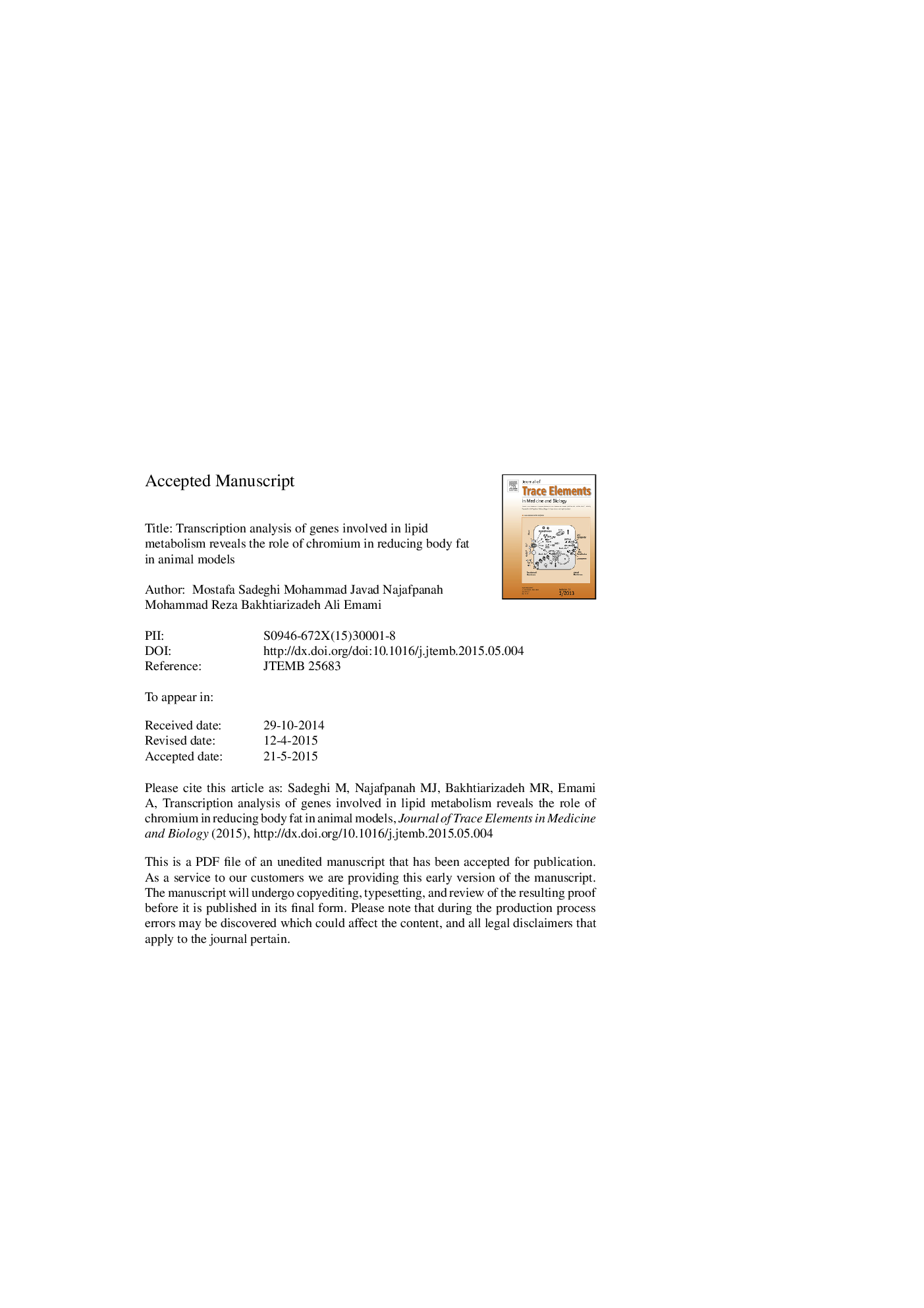| Article ID | Journal | Published Year | Pages | File Type |
|---|---|---|---|---|
| 7639461 | Journal of Trace Elements in Medicine and Biology | 2015 | 27 Pages |
Abstract
Chromium was proposed to be an essential trace element over 50 years ago and has been accepted as an essential element for over 30 years. The recent studies indicated that the addition of supra nutritional amounts of chromium to the diet can only be considered as having pharmacological effects. However, the precise mechanism through which chromium acts on lipid, carbohydrate, protein and nucleic acid metabolism are relatively poor studied. To uncover, at least partially, the role of chromium in lipid metabolism, in this study, we evaluated the expression status of eight important genes, involved in fat biosynthesis and lipid metabolism, in four different tissue types (liver, subcutaneous fat, visceral fat, and longissimus muscle) in domestic goat kids feeding on three different chromium levels. The quantitative real-time PCR (RT-PCR) was established for expression analyses with HSP90 gene was used as reference gene. The results showed that supplementation of goats with 1.5Â mg/day chromium significantly decreases the expression of the ACC1, DGAT1, FABP4, FAS, HSL, LEP genes, but does not affect the expression of the LPL and SCD1 genes in all studied tissues. This study highlights, for the first time, the role of supra nutritional levels of chromium in lipid biosynthesis and metabolism. These findings are of especial importance for improving meat quality in domestic animals.
Keywords
Related Topics
Physical Sciences and Engineering
Chemistry
Analytical Chemistry
Authors
Mostafa Sadeghi, Mohammad Javad Najaf Panah, Mohammad Reza Bakhtiarizadeh, Ali Emami,
